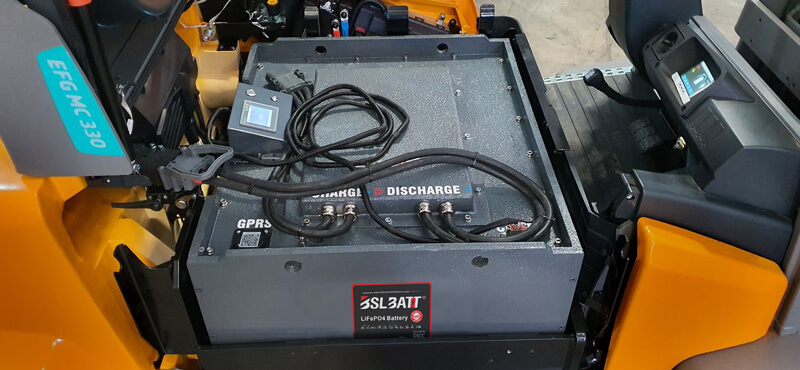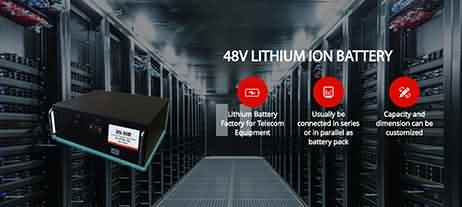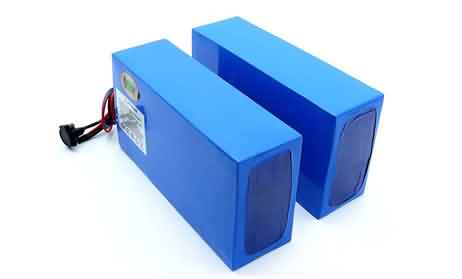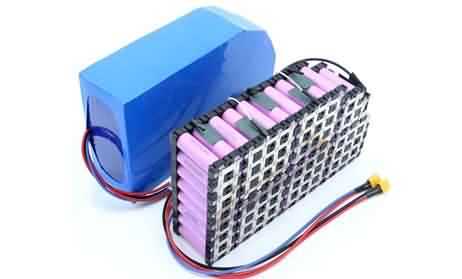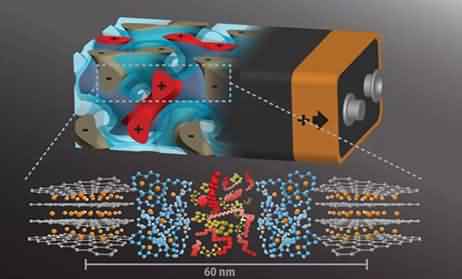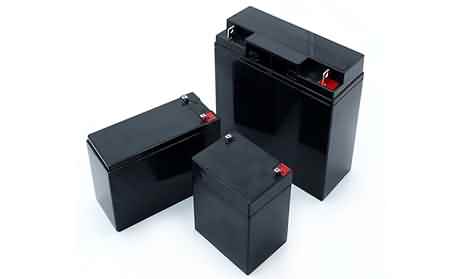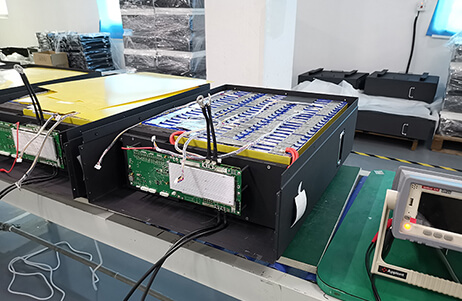
- China
- English
- Françai
- Español
- Deutsch
- Română
- العربية
- 한국어
- 日本語
- Italiano
- Português
- Gaeilge
- Dansk
- Čeština
- Русский
- Afrikaans
- Euskara
- Català
- Esperanto
- हिन्दी
- Ελληνικά
- Bahasa Melayu
- Polski
- Српски
- Kiswahili
- ภาษาไทย
- Tiếng Việt
- Türkçe
- Svenska
- Cymraeg
- Slovenčina
- Latviešu
- Malti
- Magyar
- Galego
- ગુજરાતી
- Eesti Keel
- বাংলা
- Shqip
- беларуская мова
- Nederlands
- Tagalog
- ქართული
- Íslenska
- Kreyòl Ayisyen
- Lietuvių
- Norsk
- slovenščina
- தமிழ்
- Українська
- ײִדיש
- اردو
- తెలుగు
- فارسی
- македонски
- ಕನ್ನಡ
- Bahasa Indonesia
- עברית
- Suomi
- Hrvatski
- Български
- Azerbaijani

Industry Application
Product Type
How to use lithium-ion battery to improve UPS performance
Published by BSLBATTNov 05,2018
How to use lithium-ion battery to improve UPS performance
Data center downtime costs ■ Therefore, as one might imagine, if there is any downtime, it is very expensive for the enterprise. For e-commerce sites, new production information or tracking sales can be difficult, and the problem may be just annoying because employees cannot access the files they need. In addition, they may have serious financial implications, such as a blackout in British Airways in May 2017. Power outages at Heathrow’s data center led to the cancellation of British Airways’ 726 flights, and many passengers lost their luggage, resulting in a direct economic loss of $108 million and a reputational damage. ■ Overall, typical data center downtime costs are estimated at $9,000 per minute, so it’s important to do all the research when investing in a reliable backup system because it plays an important role in reducing downtime. A well-designed UPS (uninterruptible power supply) is used in conjunction with an advanced battery system to ensure continu...
Published by BSLBATTNov 03,2018
What is causing the lithium battery to catch fire?
To be precise, the so-called “explosion” is actually a fire, and the lithium battery ignites spontaneously. So, what is causing the lithium battery to catch fire? Charging speed too fast ★ The main component of a lithium ion battery is a battery in which a lithium alloy metal oxide is used as a positive electrode material, graphite is used as a negative electrode material, and a nonaqueous electrolyte solution is used to realize a chemical reaction and supply electric power. When charging, lithium ions are located on the positive electrode and move to the negative electrode during discharge. The principle is simple. ★ The problem is that the movement speed of lithium ions is limited, and once it is exceeded, it becomes unstable, such as a short circuit. Although companies such as Qualcomm are actively promoting fast charging technology, the charging speed needs to meet the limits of lithium ions and create a stable environment through some technologies to prevent s...
Published by BSLBATTNov 01,2018
Comprehensive understanding of self-discharge of lithium battery
Classification of self-discharge: From the effect of self-discharge on the battery, self-discharge can be divided into two types: self-discharge where the loss capacity can be reversibly compensated; and self-discharge where the loss capacity cannot be reversibly compensated. According to these two classifications, we can give some self-discharge reasons approximately contoured. Reasons for self-discharge: 1. Causes of reversible capacity loss: The reason for the reversible capacity loss is that a reversible discharge reaction occurs, and the principle is consistent with the normal discharge reaction of the battery. The difference is that the normal discharge electron path is an external circuit and the reaction speed is fast; the self-discharge electron path is an electrolyte, and the reaction speed is very slow. 2. Causes of irreversible capacity loss: When an irreversible reaction occurs inside the battery, the resulting capacity loss is irreversible capacity loss. The typ...
Published by BSLBATTOct 30,2018
Lithium battery fire extinguishing and lithium ion batteries fire safety precautions
There is currently limited data on fire characteristics for large batteries. However, we can predict that when the battery enters thermal runaway, thermal runaway propagation will produce an identifiable mark; the battery will also exhibit corresponding characteristics in some way. The fire may be in a state of gradual burnout or an explosion. Both types of accidents, as well as the negative by-products they produce (jetted shrapnel, molten metal, burning electrolytes, and other materials) can be managed and controlled by setting appropriate storage measures and transportation environments for the battery. Systems using lithium ion batteries may need to continue to use and develop some suppression and lithium battery fire suppression systems to reduce the incidence of negative accidents and thus control the risk in order for the battery system to be reassured by users. Lithium ion batteries fires occur all over the world. These fires occur in energy storage systems (wind, solar...
Published by BSLBATTOct 29,2018
Solid state lithium battery VS traditional lithium battery
The solid lithium battery refers to a lithium secondary battery in which the electrolyte portion of the battery is made of a solid material. Solid-state batteries differ from conventional lithium-ion batteries in that solid-state batteries replace the electrolytes, electrolyte salts, and separators of conventional lithium-ion batteries with solid electrolytes. Safety, energy density and cycle life have always been three major requirements for power batteries. Because solid-state batteries have the potential to outperform traditional lithium-ion batteries in all three respects, they are also considered the next generation of battery technology: Advantages of solid-state battery: high safety, no risk of spontaneous combustion or explosion. Conventional lithium-ion batteries using organic electrolytes tend to cause heat generation in the electrolyte under abnormal conditions such as overcharging and internal short-circuit, and there is a danger of spontaneous combustion or even exp...
Published by BSLBATTOct 26,2018
What should be paid attention to when recharging a lithium battery
Lithium battery charging precautions: ★ The ambient temperature range during charging is 0~+45°C; ★ The charging current shall not exceed the specification code current, generally not exceeding 2C; ★ A battery that has bulging, deformation, leakage, or a voltage lower than 2.8V cannot be charged; the temperature of the battery before charging at room temperature must not exceed 40 ° C; ★ The upper limit voltage of charging shall not exceed 4.22V, and the surface temperature of the battery body shall not be higher than 45 °C after charging at room temperature; ★ It is recommended to use a charger that is produced by a regular manufacturer and has a reliable quality. The battery pack recommends a charger with a balanced function. Lithium battery discharge precautions: ★ The temperature range during discharge is -20~+60°C ★ The discharge current must not exceed the specification mark current ★ A battery that has bulging, deformation, leakage, or voltage difference ≥30mV cannot be...
Published by BSLBATTOct 25,2018
Growing Popularity Of Lithium-Ion Battery Packs
Why are Lithium-Ion battery packs popular? Of all the metals, lithium is the lightest. It has the highest electrochemical potential and provides the highest energy density per weight. G.N. Lewis et al pioneered the idea of Li-Ion battery in 1912. However, it was only in the early 1970’s, that the world got its first non-rechargeable lithium batteries for commercial use. Qualities of Lithium-Ion Batteries Due to the fact that it has the highest energy density, the Li-Ion battery has an edge over the normal nickel cadmium battery. Due to improvements incorporated in the active compounds of the electrode, the Li-Ion battery has an electric power density which is almost three times more than that of the nickel cadmium battery. Besides this, the load capacity of lithium battery is also appreciable. It has a flat discharge curve which gives you the chance to use the saved power in a voltage range of your choice. One of the noteworthy qualities of Lithium-Ion battery pack...
Published by BSLBATTNov 27,2019
Why China Can Dominate Lithium-ion Battery Production
Is Lithium-ion the Ideal Battery? For many years, nickel-cadmium had been the only suitable battery for portable equipment from wireless communications to mobile computing. Nickel-metal-hydride and lithium-ion emerged In the early 1990s, fighting nose-to-nose to gain customer’s acceptance. Today, lithium-ion is the fastest growing and most promising battery chemistry. The world is becoming increasingly electrified. Not only are developing countries increasing the availability of electricity to their populations, but the electrification of existing transportation infrastructure is proceeding at a rapid pace. By 2040, over half of the cars on the roads are projected to be powered by electricity. A Brief History of Batteries Batteries have been a part of our daily lives for a long time. The world’s first true battery was invented in 1800 by the Italian physicist Alessandro Volta. The invention represented a remarkable breakthrough, but since that time there have been only a h...
Published by BSLBATTOct 22,2018
Six Tips For Extending The Life Of Lithium-Based Batteries
Lithium batteries are advancing rapidly, and they provide longer use times than nickel and lead based batteries. Their use has been adopted as the standard for most of the spy cameras, and other electronics on the market today. Here are six tips to extend the life of your lithium-ion based electronic device. Here are six things you can do to increase the life of your lithium-based battery. 1. Avoid constant full discharges: Lithium batteries prefer a partial discharge, over a full discharge. You should not frequently fully discharge the batteries, rather charge the battery more often, if possible, daily to insure a long life. 2. Recalibrate: We suggest a full discharge every 30 charges for batteries with fuel gauges, like laptops and mobile phones to recalibrate the battery. Just let it run until it stops, then recharge. 3. Laptop computer uses: If you keep the battery in your laptop for everyday use, and power it from the wall socket, unplug the power every few days and let it r...
Published by BSLBATTOct 19,2018
Lithium Iron Phosphate Battery: LiFePo4
A lithium iron battery is a lithium ion battery which uses iron phosphate (LiFePO4) as cathode material. But first, we must understand what a lithium battery is to get a better idea of the advantages of a LiFePo4 battery. Lithium-ion batteries (or simply lithium batteries) are batteries which use lithium based material as a cathode and a variety of other materials (most commonly graphite) as anode. These batteries are commonly found in portable devices, such as cellphones, digital cameras, and others due to its light weight, small form factor and long battery life. Lithium batteries have the advantage of using lithium, which is the element that is most easily oxidized. It means that it can easily give up an electron, which is then used by the circuit to power itself. The easier electrons are taken from a battery, the more efficient it becomes, hence accounting for its longevity. In addition, lithium is the lightest known metal, therefore it allows for portability and the materia...
Published by BSLBATTOct 18,2018
The discovery of a submarine lithium battery is actually not that divine
According to Japanese media reports, on October 4th, local time, the Japanese dragon-class conventional submarine No. 11 “Phoenix Dragon” was launched. The boat used lithium batteries for the first time. It was called “revolutionary breakthrough” by submarine batteries. As we all know, the battery is the main power source of the conventional submarine, and it is also the backup power supply and emergency power supply for the nuclear submarine. Therefore, the performance of the battery directly determines the submarine performance and combat capability. If the battery performance is not good, the power supply is insufficient, the submarine will not run fast, the mobility is greatly limited, the charging time is longer, and the risk of being exposed is greatly increased. For this reason, the development and application of submarine batteries have been highly valued by the world’s submarine manufacturers. The lead-acid battery has mature technology, hi...
Published by BSLBATTOct 17,2018
How will the European Union launch a battery offensive to catch up with China
EU Energy Commissioner Sevkovic said recently that the European Union plans to provide tens of billions of dollars in battery research and companies building large-scale battery factories in order to catch European battery production to compete with Chinese and American competitors. “The European Union launched a battery offensive!” Germany’s “Economics” magazine reported on the 15th that EU energy commissioner Sevkovic said recently that the EU plans to provide tens of billions of subsidies for battery research and the construction of large battery factories in order to make European batteries Production catches up with competitors in China and the United States. During the Paris Motor Show earlier this month, Sevkovic said to the outside world, “The future will be the era of electrification, Europe must keep up with the development of battery technology.” Sevkovic said that the future European battery market will It reached 250 billion...






